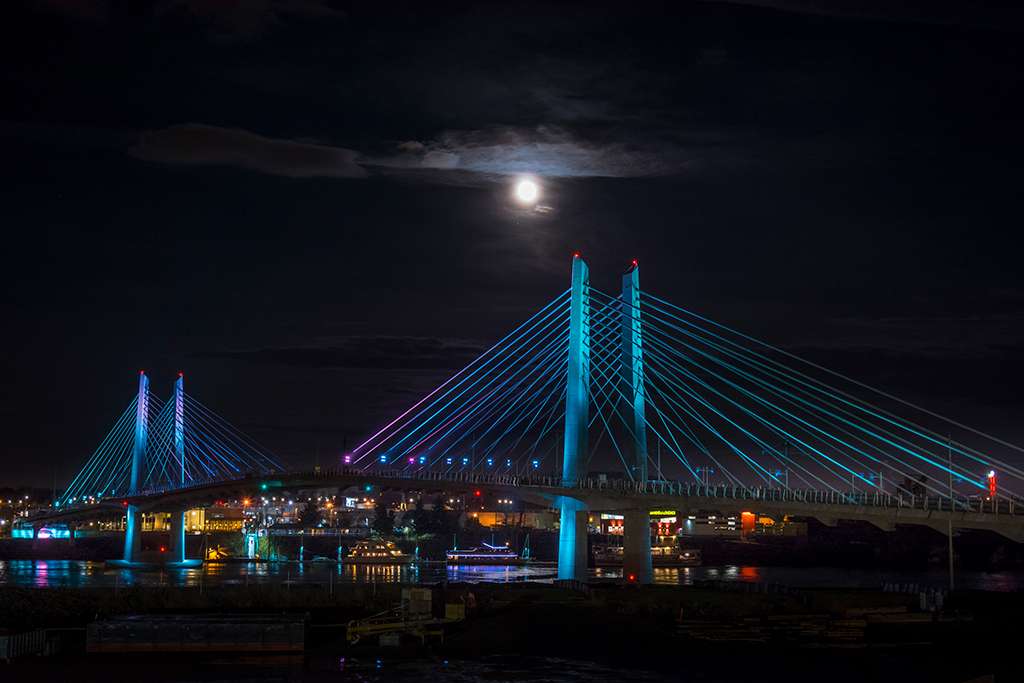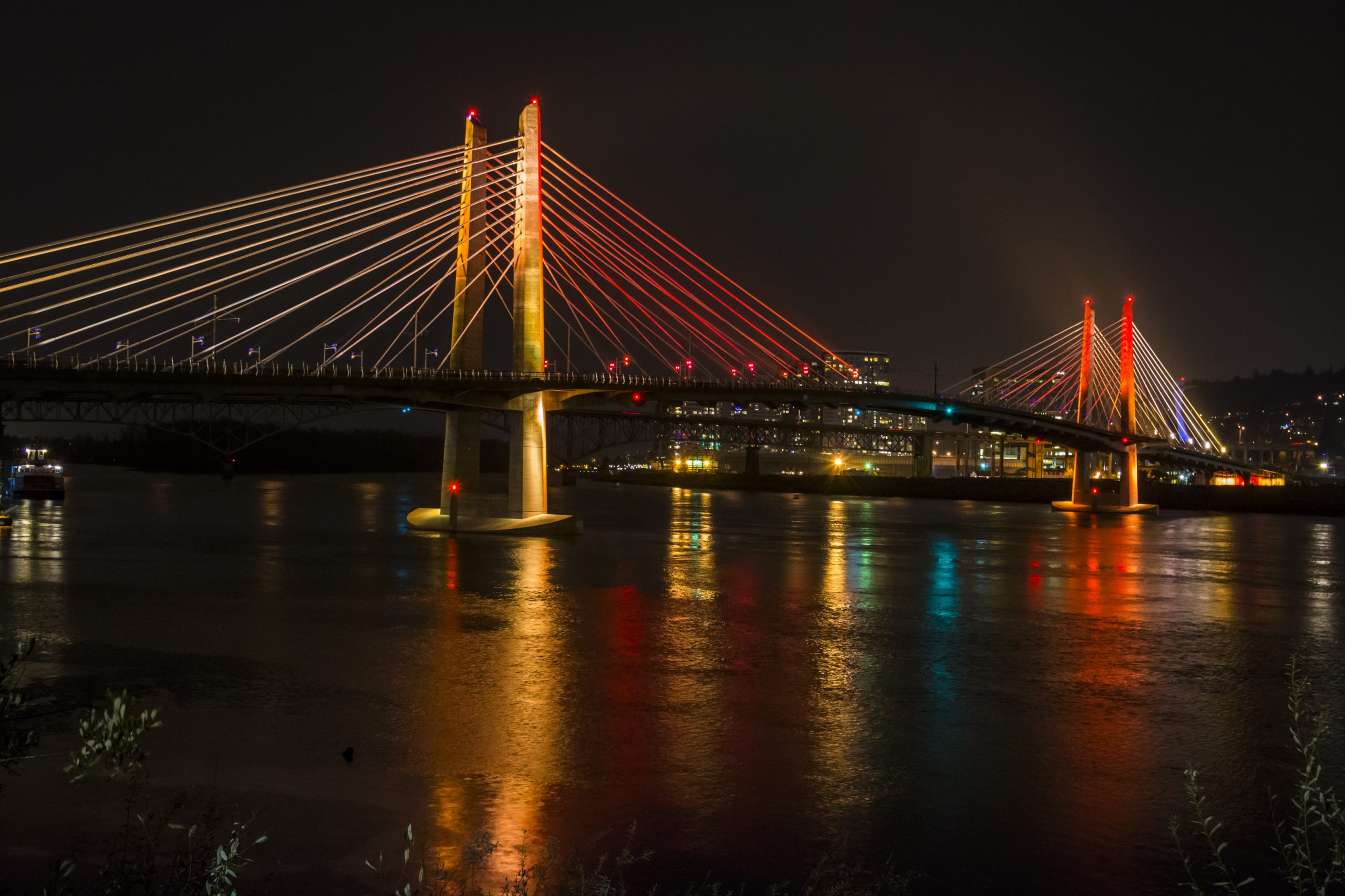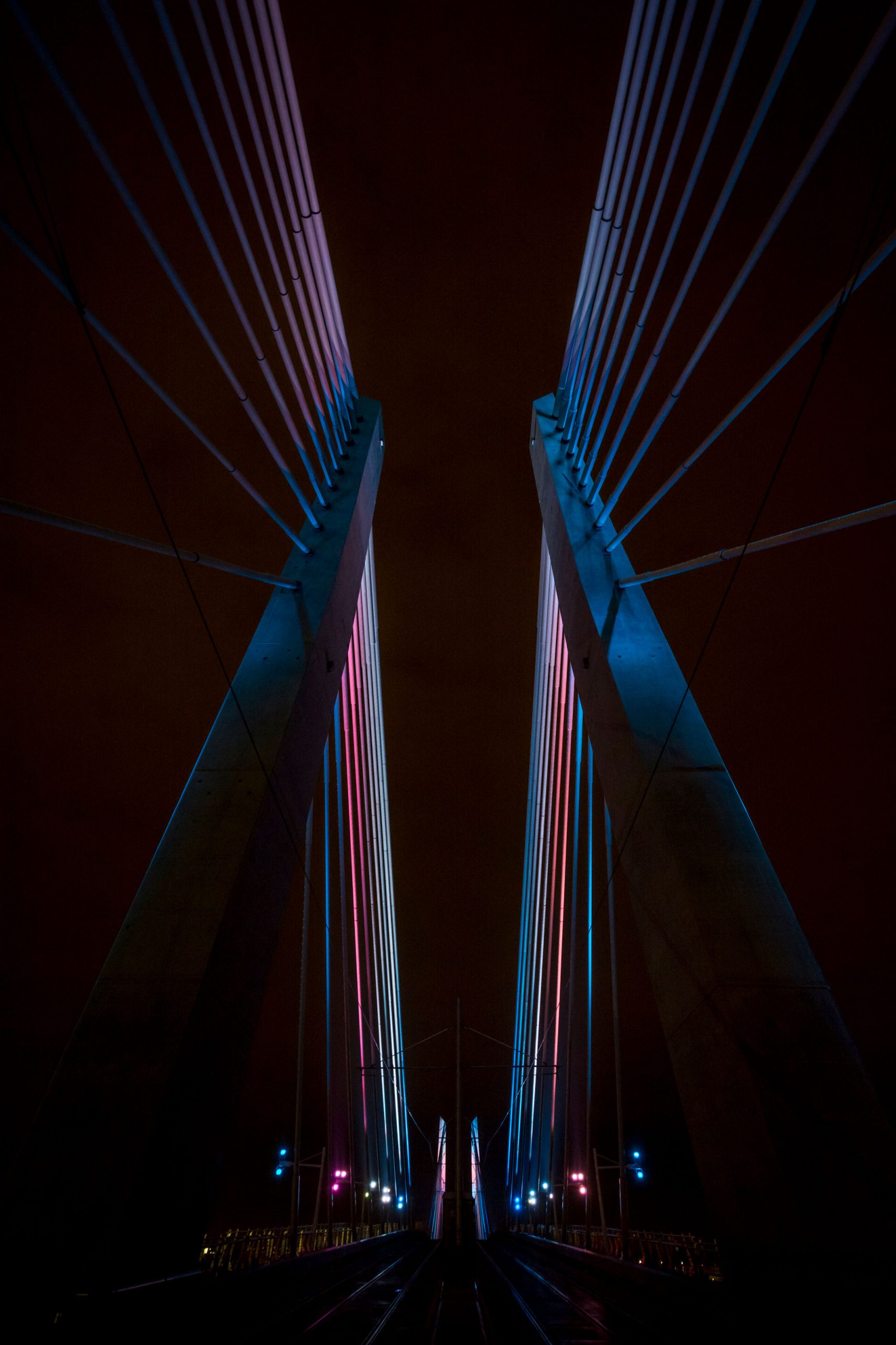


Client: TriMet Capital Projects and Construction Division
Location: Portland, OR, United States
Completion date: 2015
Artwork budget: $450,000
Project Team
Artist
Morgan Barnard
Artist
Doug Hollis
Artist
Anna Valentina Murch
Overview
As part of TriMet’s Public Art Program, artists Anna Valentina Murch and Douglas Hollis collaborated with digital artist Morgan Barnard to create a dynamic lighting experience on the bridge that changes in relation to the natural conditions of the Willamette River in Portland Oregon. The water temperature determines the overall color scheme while the speed of the river controls the pace at which the colors and light move across the bridge. The lighting is also directed at the two landside abutments, where parabolic sound dishes, also designed by Murch and Hollis, offer surprising moments of amplification.
Goals
The goals of this project were to create an iconic aesthetic lighting experience that is influenced by the conditions of the river below the Tilikum Crossing bridge and accentuate the iconic architecture of the bridge. The poetic relationship between the river and bridge display larger seasonal changes as well smaller scale changes in weather and tidal flow. Connecting the river data to the aesthetic lighting was an integral aspect of the original concept.
Process
As a digital artist on the Tilikum Light project, I worked with Anna Valentia-Murch and Doug Hollis to translate the original concept into a completed light art project. We worked together to decide which data points from the river monitoring were to be used. We also developed rules for how the data is mapped to a live animation that drives the lights. Historical data sets were studied to see how the various data points change over time. Early digital prototypes and animation tests were developed to begin designing the kinds of movement of light we could achieve. Later in the project, Morgan Barnard and Doug Hollis worked on site to translate the prototypes into a final dynamic lighting design that fulfilled Anna Valentina-Murch's vision.